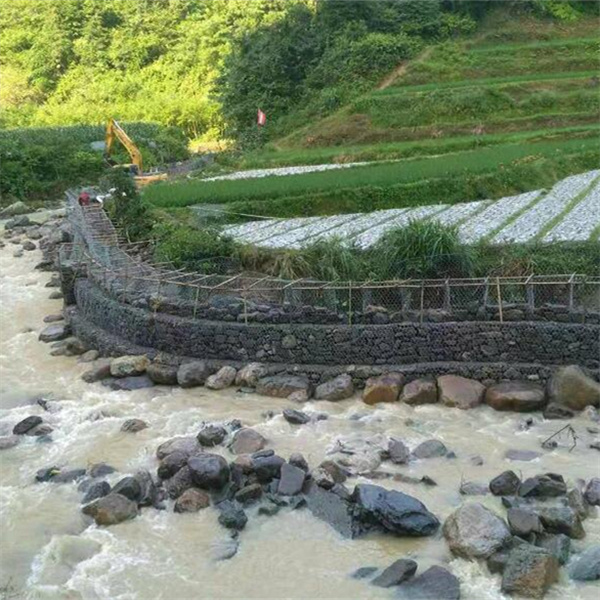Дек . 30, 2024 09:36 Back to list
Explore Various Sizes of Gabion Mattresses for Your Project Needs
Understanding Gabion Mattress Sizes A Comprehensive Guide
Gabion mattresses are versatile structures that have gained immense popularity in civil engineering and environmental protection. These wire mesh containers, typically filled with stones or other materials, are primarily used for erosion control, retaining walls, and riverbank stabilization. One essential aspect that project managers and engineers must consider is the size of gabion mattresses, as it directly impacts their effectiveness and suitability for various applications. This article will delve into the different sizes of gabion mattresses available in the market and how to choose the right one for your project.
What is a Gabion Mattress?
Gabion mattresses are essentially flat, rectangular structures made from double-twisted wire mesh filled with durable materials such as rocks, concrete, or recycled materials. Unlike traditional gabion walls, which are taller and used for vertical support, gabion mattresses are designed to be low-profile. They offer a stable surface that can dissipate water flow and help prevent soil erosion.
Standard Sizes of Gabion Mattresses
Gabion mattresses come in various sizes to cater to different applications. The most common dimensions include
1. 2m x 1m x 0.3m 2. 3m x 2m x 0.3m 3. 4m x 2m x 0.3m 4. 4m x 2m x 0.5m
The size you choose will depend on the specific needs of your project, including the area to be covered, the type of soil, and the expected water flow.
Factors to Consider When Choosing Gabion Mattress Sizes
1. Application Type The intended use of the gabion mattress heavily influences the size selection. For example, if you’re using it for riverbank erosion control, larger units may be more effective due to increased water flow. On the other hand, for smaller areas or slopes, shorter mattresses might suffice.
buy gabion mattress sizes

2. Local Environment Consider the geographical area and local climate. In regions prone to heavy rainfall or flooding, larger gabion mattresses can better withstand water pressure and soil erosion. Conversely, in calmer areas, smaller models might be appropriate.
3. Material Type The weight and density of the fill material used can also dictate the size of the gabion mattress. Heavier materials may require sturdier, larger structures for stability, while lighter materials can be accommodated in smaller frames.
4. Installation and Transport Larger gabion mattresses can be heavy and cumbersome to transport and install. Evaluate the logistics of delivery and installation to ensure that your selected size fits within your operational capacity.
5. Compliance and Regulations It’s crucial to adhere to local regulations and guidelines regarding the use of gabion mattresses. Some regulations may stipulate specific sizes or configurations depending on environmental and safety concerns.
How to Purchase Gabion Mattresses
When looking to buy gabion mattresses, it’s essential to seek a reputable supplier who can provide quality products that meet your project’s requirements. Here’s a handy checklist
- Material Quality Ensure the wire mesh used is galvanized or otherwise treated to prevent rusting and degradation. - Custom Sizes Some suppliers offer custom sizes, allowing you to tailor the dimensions to specific project needs. - Consultations Work with engineers or consultants to determine the best size and fill material for your requirements. - Bulk Purchasing If you have a large project in mind, consider bulk purchasing options to reduce costs.
Conclusion
Choosing the right gabion mattress size is a critical factor in the success of erosion control and stabilization projects. By considering the application, local conditions, and logistical aspects, you can effectively select a gabion mattress that meets your needs. With numerous options available in the market, understanding the various sizes and their specific applications will ensure that you make an informed decision for your next project. Remember, investing in quality materials and proper sizing will provide a stable and long-lasting solution for managing erosion and environmental challenges.
-
Visualizing Gabion 3D Integration in Urban Landscapes with Rendering
NewsJul.23,2025
-
The Design and Sustainability of Gabion Wire Mesh Panels
NewsJul.23,2025
-
The Acoustic Performance of Gabion Sound Barriers in Urban Environments
NewsJul.23,2025
-
Mastering the Installation of Galvanized Gabion Structures
NewsJul.23,2025
-
Gabion Boxes: Pioneering Sustainable Infrastructure Across the Globe
NewsJul.23,2025
-
Custom PVC Coated Gabion Boxes for Aesthetic Excellence
NewsJul.23,2025
-
Installation Tips for Gabion Wire Baskets in Erosion Control Projects
NewsJul.21,2025






